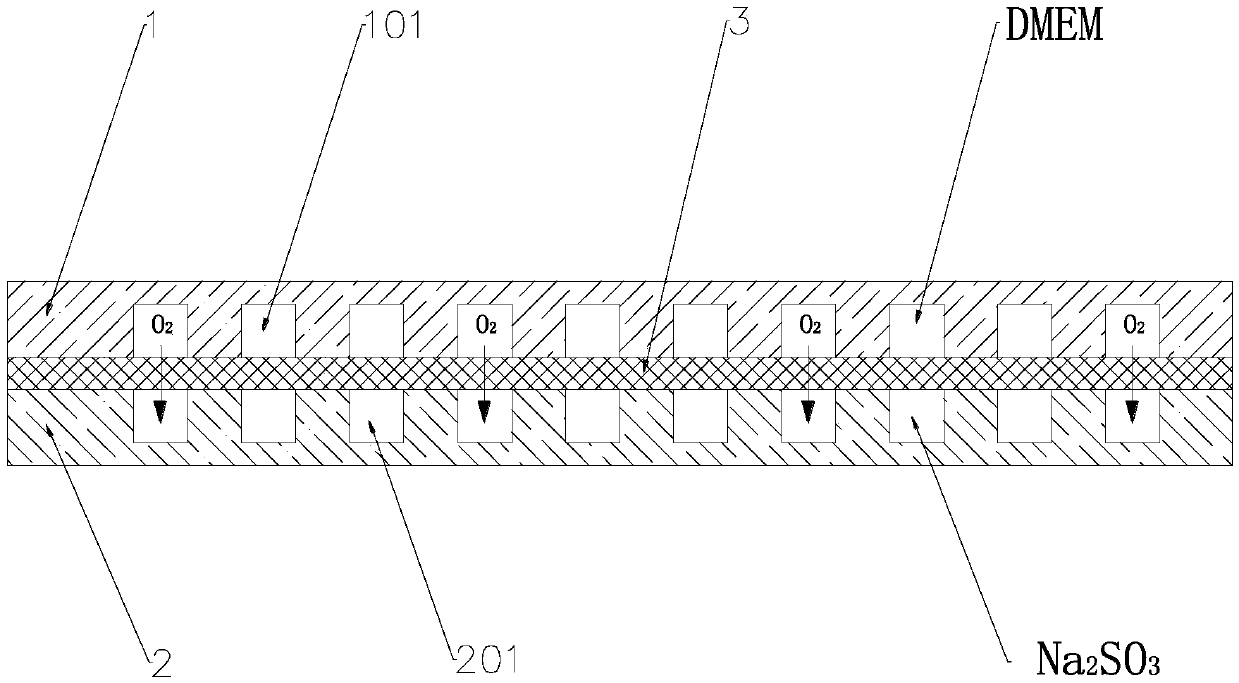Chip for controlling dissolved oxygen concentration in microfluid
A technology of dissolved oxygen concentration and control chip, which is applied in laboratory utensils, laboratory containers, chemical instruments and methods. question
- Summary
- Abstract
- Description
- Claims
- Application Information
AI Technical Summary
Problems solved by technology
Method used
Image
Examples
Embodiment Construction
[0038] 1. Microfluidic dissolved oxygen concentration control chip (hereinafter referred to as oxygen concentration control chip)
[0039] 1. The design principle of the oxygen concentration control chip
[0040] The oxygen concentration control chip designed in this embodiment reduces the dissolved oxygen concentration in the flowing cell culture medium through chemical consumption. The basic structure of the chip is as figure 1 As shown, the cell culture medium flows through the first microchannel on the upper plate 1, Na 2 SO 3 The solution flows through the second microchannel on the lower plate 2. At this time Na 2 SO 3 The dissolved oxygen concentration in the solution is 0, therefore, from the cell culture medium interface to Na 2 SO 3 There is a large oxygen concentration gradient at the solution interface, which causes the oxygen in the cell to diffuse to the Na 2 SO 3 react with it in solution (2Na 2 SO 3 +O 2 = 2Na 2 SO 4 ). Cell culture medium and Na ...
PUM
 Login to View More
Login to View More Abstract
Description
Claims
Application Information
 Login to View More
Login to View More - R&D
- Intellectual Property
- Life Sciences
- Materials
- Tech Scout
- Unparalleled Data Quality
- Higher Quality Content
- 60% Fewer Hallucinations
Browse by: Latest US Patents, China's latest patents, Technical Efficacy Thesaurus, Application Domain, Technology Topic, Popular Technical Reports.
© 2025 PatSnap. All rights reserved.Legal|Privacy policy|Modern Slavery Act Transparency Statement|Sitemap|About US| Contact US: help@patsnap.com



